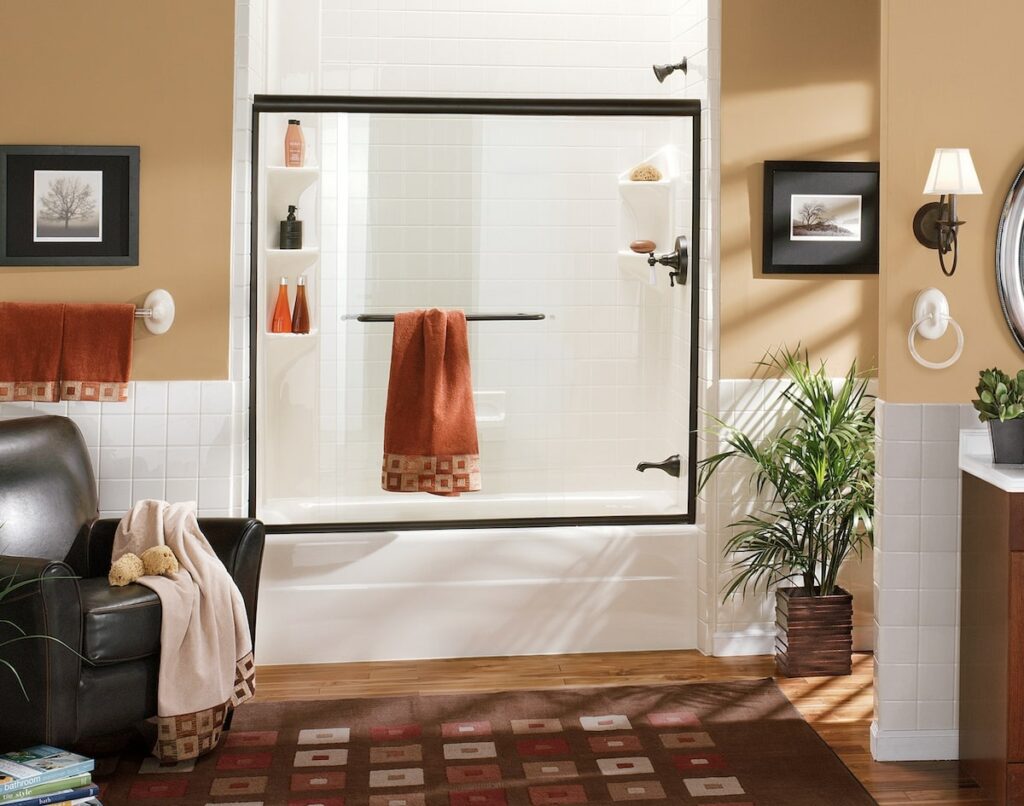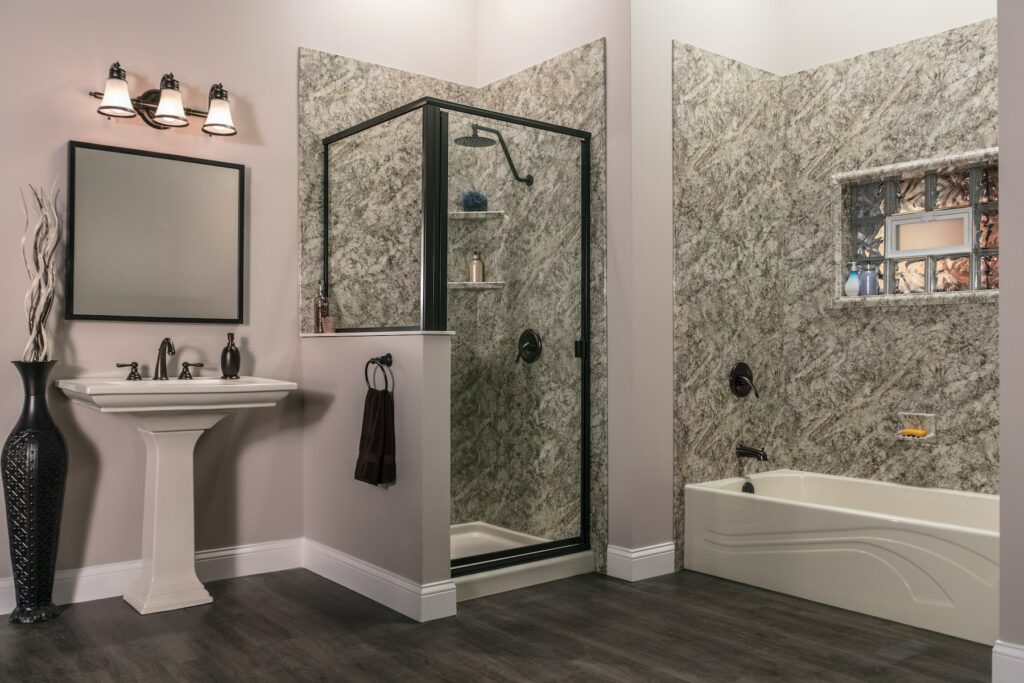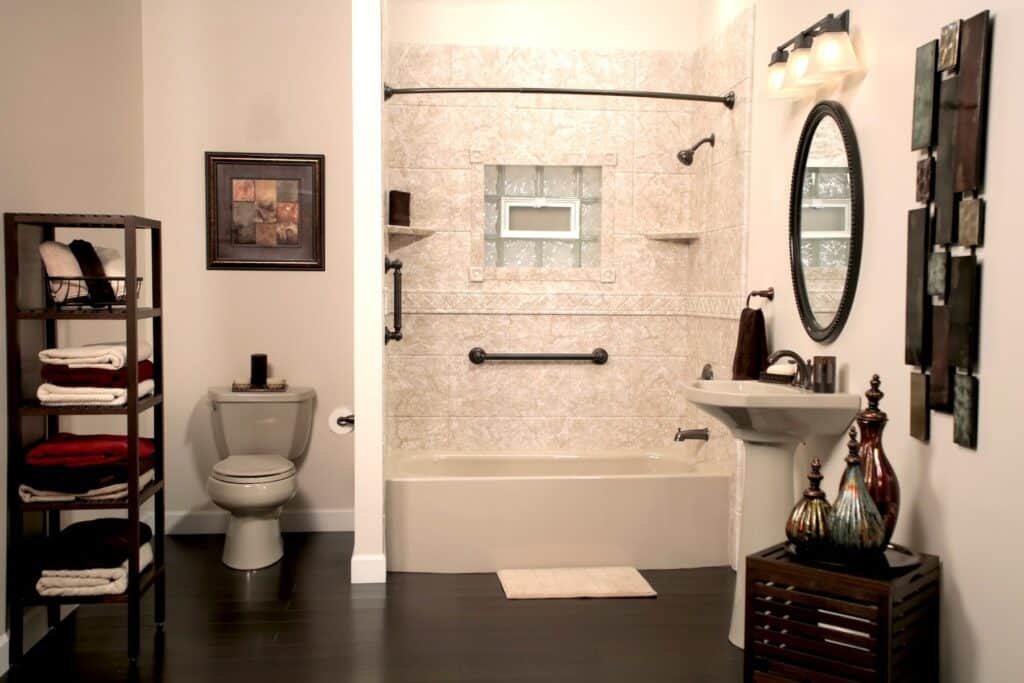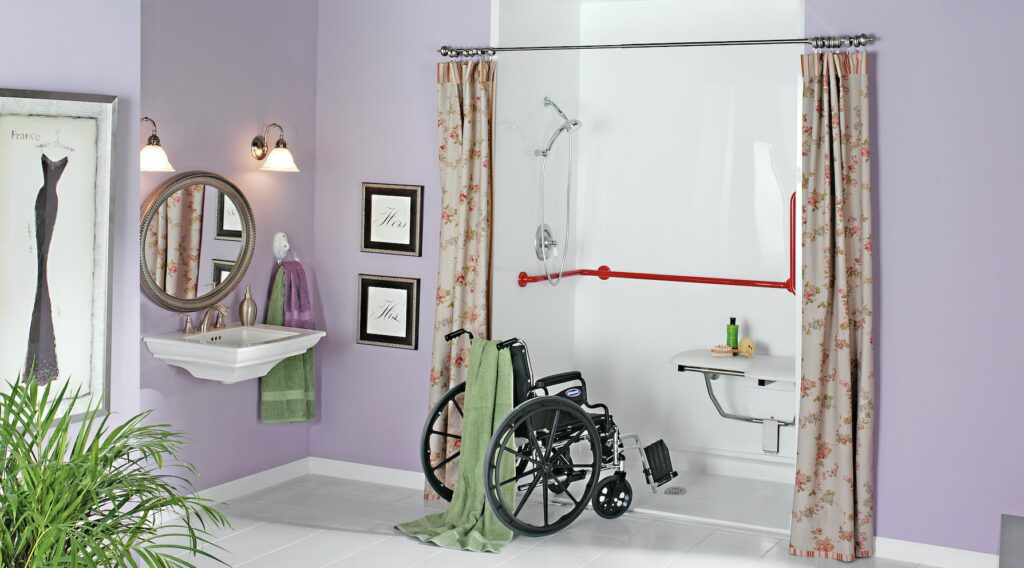As we age, our homes should become more supportive—not more challenging. Among all the rooms in the house, the bathroom is one of the most essential spaces to update for aging in place. With slick surfaces, tight quarters, and high thresholds, the bathroom can be a hotspot for serious accidents, especially for older adults.
According to the CDC, more than 80% of falls among seniors happen in the bathroom. Many of these incidents lead to hospital visits, long-term care needs, or a loss of independence. The good news? Most of these risks can be reduced—or even eliminated—through smart planning, practical tools, and professional remodeling.
At Panda Contractors, we specialize in creating bathrooms that are not only beautiful but built for long-term safety and ease of use. Whether you’re planning ahead for your own future or helping a loved one live more safely at home, these expert tips will guide you in making the bath and shower area a safer, more functional place.

Why Updating the Bath and Shower Is Crucial for Aging in Place
While the bathroom may be one of the smallest rooms in the home, it plays an oversized role in the health, safety, and independence of seniors. For those who wish to remain at home as they age, upgrading the bath and shower area isn’t a luxury—it’s a necessity.
A Common Site for Falls and Accidents
Falls are the leading cause of injury-related death among older adults, and bathrooms are where many of these accidents occur. Wet floors, slick tiles, narrow layouts, and high tub walls combine to create a hazardous environment for individuals with limited mobility, joint stiffness, poor vision, or balance issues.
Some of the most common high-risk actions include:
- Stepping over the side of a traditional bathtub
- Reaching or twisting to grab shampoo or soap
- Balancing while washing or drying
- Standing on slippery, wet surfaces
For seniors, these everyday movements can quickly lead to serious injury if safety precautions aren’t in place.
Preserving Privacy and Self-Sufficiency
Installing accessible bathroom features isn’t just about preventing accidents—it’s also about promoting personal dignity. Being able to bathe independently is a major component of self-worth and emotional well-being, especially for seniors.
Simple design upgrades—like grab bars, shower chairs, and handheld showerheads—can empower older adults to continue caring for themselves without daily assistance from family or professional caregivers.

Reducing the Need for Assisted Living
A serious bathroom injury is often the tipping point that leads to a move into a nursing home or assisted living facility. By proactively making safety and accessibility modifications, you can help loved ones stay at home longer and avoid these difficult transitions.
The right bath and shower updates can extend the number of healthy, independent years a senior enjoys in their own home—while giving family members peace of mind.
Areas to Improve Safety
Eliminate Slips and Trips: The Foundation of Bathroom Safety
One of the most overlooked yet crucial elements of a safe bathroom is the flooring. Traditional bath mats, throw rugs, or polished tiles can become slip hazards—especially when wet.
What to Do:
- Replace rugs with low-profile, non-slip mats that grip the floor firmly.
- Install non-slip strips or decals inside the tub and on the shower floor.
- Use gripping tape on grab bars or other high-use handles to prevent slippage, even with wet hands.
- Eliminate clutter from the bathroom floor to reduce trip hazards. This includes decorative baskets, excess bath products, or low furniture that could catch on a walker or cane.
The goal here is to make every square inch of the floor stable and secure.
Improve Balance and Stability with Assistive Fixtures
As mobility decreases with age, standing for long periods, bending, or shifting balance becomes riskier. Installing supportive fixtures can dramatically increase safety and confidence.
Recommended Features:
- Grab Bars: These should be installed near the toilet, inside the shower or tub, and by the bathroom entrance. They help provide support when rising, sitting, or stepping.
- Shower Chairs & Transfer Benches: Allow seniors to sit securely while bathing or to safely transition from a wheelchair into the tub.
- Raised Toilet Seats with Armrests: Sitting and standing from a low toilet can be challenging; a raised seat provides a more natural height and reduces joint strain.
We recommend that all fixtures meet ADA (Americans with Disabilities Act) guidelines for maximum safety.

Create Barrier-Free Bathing with Walk-In Showers or Tubs
Traditional bathtubs often require users to lift their leg over a 15–18-inch edge—a major obstacle for someone with joint stiffness, balance issues, or limited mobility. Modern bathroom designs allow for safer, more inclusive options.
Design Options to Consider:
- Walk-In Showers: These are curbless, allowing seniors to walk or roll in without obstruction. Add built-in seating and a handheld showerhead for ease.
- Walk-In Tubs: With watertight side doors, built-in seats, and hydrotherapy features, walk-in tubs offer luxurious safety for those who prefer bathing over showers.
- Tub-to-Shower Conversions: If remodeling space is limited, converting a standard tub into a walk-in shower is a cost-effective and transformative solution.
All of these upgrades dramatically reduce the risk of falls and improve everyday quality of life.
Organize Thoughtfully: Keep Essentials Within Reach
Reaching for shampoo or bending to pick up a towel can be risky. A well-organized bathroom reduces movement and the likelihood of falls.
Storage Tips:
- Install wall-mounted caddies or dispensers to keep soap, shampoo, and other bath items at shoulder level.
- Use adjustable-height shelving or over-the-toilet storage for items like toilet paper and towels.
- Avoid under-the-sink storage for daily-use products, as bending down can throw off balance.
- Consider shower chairs with integrated storage for easy access to toiletries while seated.
Everything used daily should be stored between waist and shoulder height to minimize bending and reaching.

Upgrade Lighting for Safety and Visibility
Vision often declines with age, and poor lighting can be the hidden cause of many bathroom falls. Bright, even lighting makes it easier to navigate and use the space with confidence.
Lighting Enhancements:
- Install LED lights above the shower, vanity, and main ceiling to eliminate dark corners.
- Add motion-activated night lights in the hallway, bathroom entrance, and near the toilet.
- Use dimmer switches to adjust brightness for daytime versus nighttime use.
- Select high-contrast finishes for floors, countertops, and grab bars to aid visual recognition.
Proper lighting helps seniors safely find their way, even during midnight bathroom trips.
Ensure Water Temperature Control for Comfort and Safety
Many seniors have slower reaction times or sensitive skin, making it vital to regulate water temperature.
Safety Adjustments:
- Set the water heater thermostat to 120°F or below to avoid scalding.
- Install anti-scald valves or pressure-balancing valves in showers and tubs to prevent sudden temperature fluctuations.
- Consider digital shower systems that pre-set safe temperatures for elderly users.
- Touch-free faucets with pre-programmed temperature settings are also ideal for arthritic hands.
Temperature control prevents burns and cardiovascular stress, making bathing safer and more enjoyable.
Add Emergency Alert Systems and Backup Safety Measures
Even with all the right safety modifications, accidents can still happen. Every senior-friendly bathroom should include built-in ways to call for help.
Emergency Tools to Consider:
- Medical Alert Buttons: Wearable or wall-mounted, these connect directly to 24/7 emergency centers.
- Voice-Activated Assistants (like Alexa or Google Home): Can be used to call family members or emergency services hands-free.
- Automatic Fall Detectors: Devices that sense a fall and send alerts even if the user is unconscious or unable to reach the button.
- Keep a cordless phone or smartphone shelf installed near the toilet or vanity in case of emergencies.
Emergency preparedness adds peace of mind for both seniors and their caregivers.

Consider Professional Remodeling for Long-Term Independence
While some safety upgrades are DIY-friendly, a full-scale bathroom remodel tailored for aging in place often requires the expertise of professionals. A certified aging-in-place contractor can evaluate your current layout and suggest improvements to support:
- Wheelchair or walker accessibility
- Waterproof and mold-resistant surfaces
- Universal design that blends safety with style
- Wider doorways and lever-style hardware for ease of entry and use
At Panda Contractors,, we offer free in-home consultations and 3D design previews so you can visualize your future-safe bathroom before construction even begins.
Safety Today Means Independence Tomorrow
The goal of aging in place isn’t just about staying home—it’s about doing so safely, comfortably, and confidently. A thoughtfully remodeled bathroom empowers seniors to maintain their routines, dignity, and independence for years to come.
Whether you’re planning ahead or responding to a recent fall, making the bathroom safer is one of the most important steps you can take. Ready to make your bathroom safer?
Contact us today to schedule your free bathroom safety consultation.





